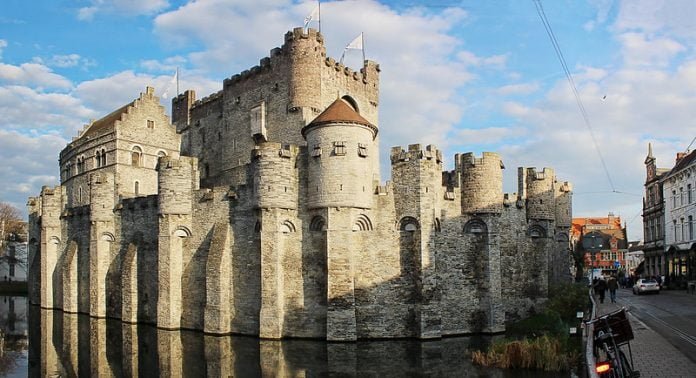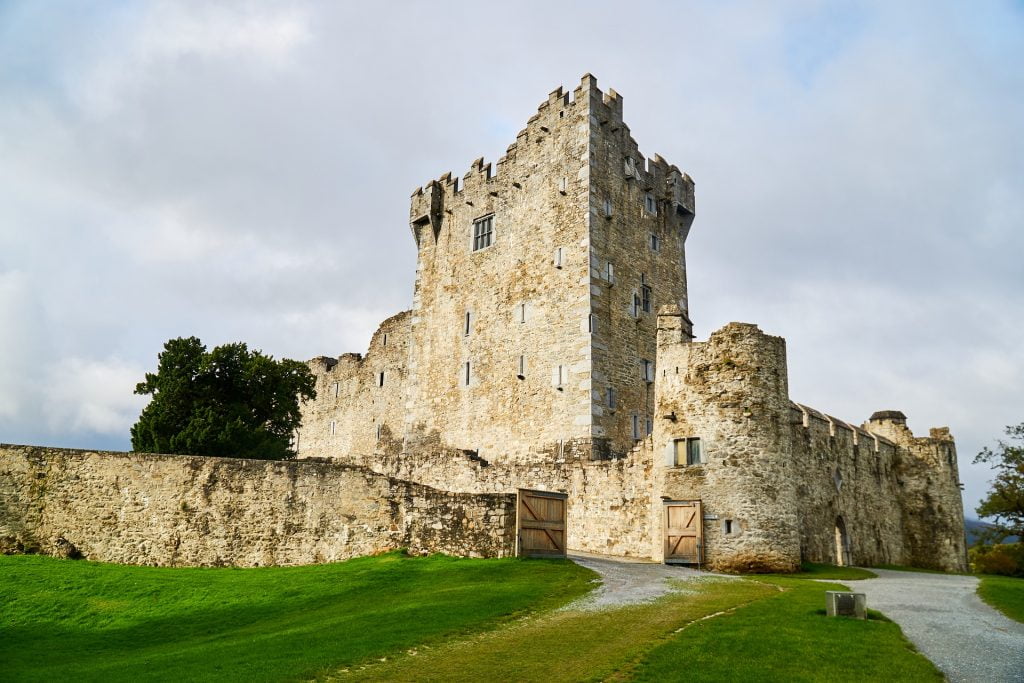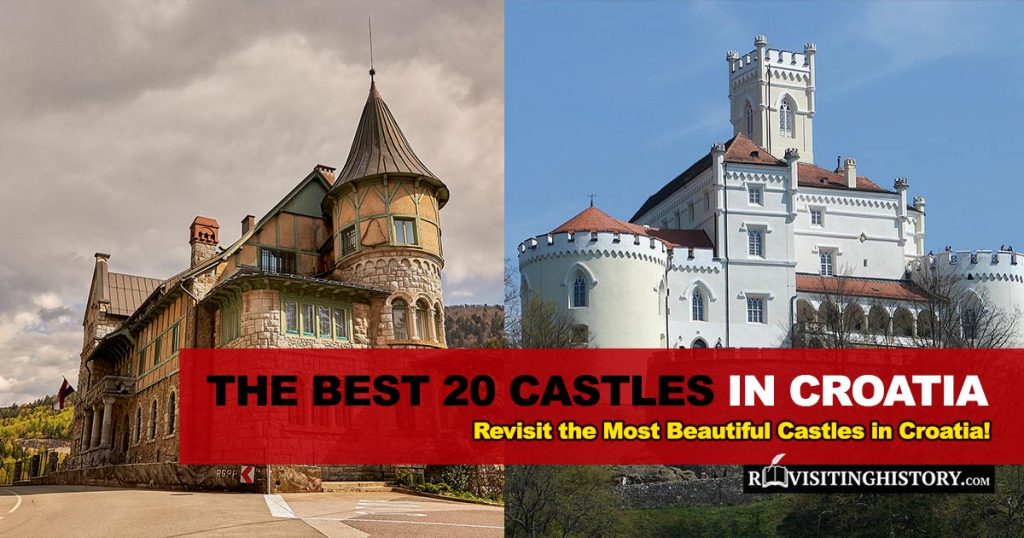Gravensteen literally means “Count’s stone” or Stone (Castle) of the Counts. The picturesque, storybook image of today’s Gravensteen Castle is a representation of the restoration architect’s vision rather than a true reflection of the original castle.
After a checkered past, the city of Ghent and the Belgium state decided to buy the castle back from private ownership and reconstruct it. In its long history, the castle had gone from a defense structure, through a stylish period as the show-off residence of a few pompous counts, followed by jail cells and courts of justice.
Later it was a cotton mill and metalworks during the Industrial Revolution, with internal housing for the workers. After several private owners, and an unsuccessful bid to demolish it, Gravensteen Castle is now at last a museum that the city of Ghent can justly be proud of.
Table of Contents
The current castle represents the ideas of what the architects and planners imagined the original castle of Phillip I looked like, rather than the actual original castle.
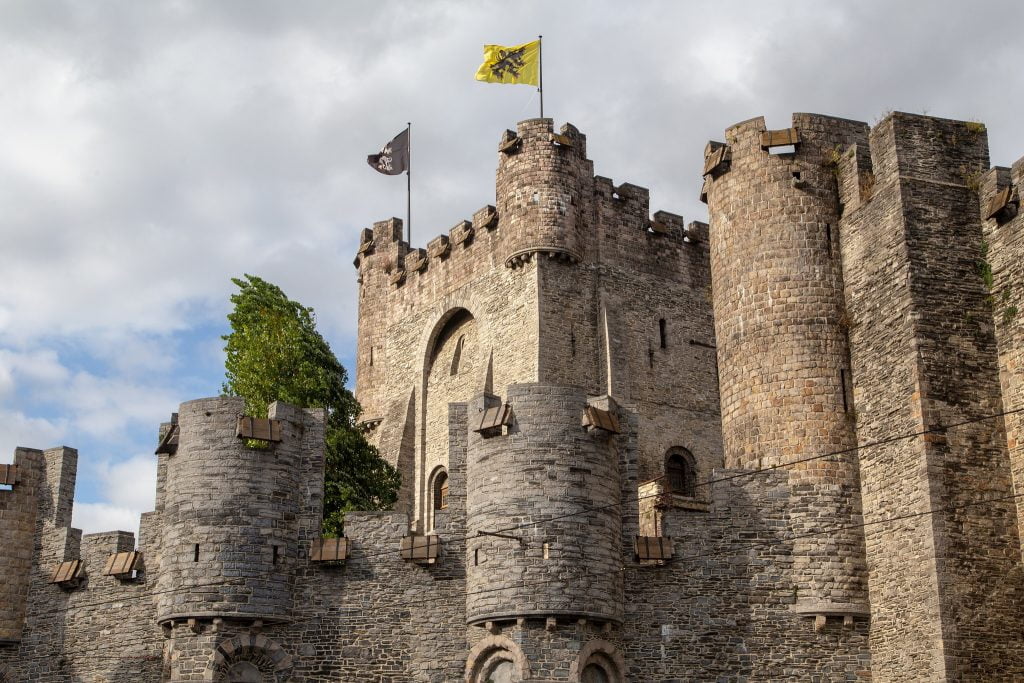
Frequently Asked Questions
Where is Gravensteen Castle Located?
Gravensteen is in the old town of Ghent, Belgium. The Castle is located between two tributaries of the Leie (Lys) River.
When was Gravensteen Castle Built? Who Build It?
The first defensive structure was built by the then Marquess Baldwin I, who later became the first Count of Flanders in the 9th century AD (CE).
When is The Best Time to Visit the Castle?
The best time to visit Castle Gravensteen is in summer, spring, or late autumn when the weather is mild.
What Other Monuments are Located Nearby?
St. Bavo’s Cathedral–where Jan and Hubert van Eyck’s “Adoration of the Lamb” altarpiece is housed–and Ghent Stadhuis (Ghent City Hall) with its two architectural styles are nearby attractions. If you prefer water outings, a boat trip along the Lys River or a visit to the “Lake of Love”, Minnewater Lake, might be an exciting way to view the castle from various other angles.
FOR HISTORY | BEAUTIFUL IMAGES | INTERESTING FACTS | TRAVEL TIPS
Early History
Romans, Flemish Counts, and the Vikings
It appears that the first occupation of the site dates back to Roman times. Centuries after the Romans, the Vikings were plaguing the area that was nominally under the French crown’s control.
Baldwin the Iron Arm was a fierce and brave warrior in the forces of Charles II of France. He fell in love and married Judith, the daughter of the French king, without his permission. She was a young widow of two English kings by this time. He fled to the province of Alsace-Lorraine with his bride. It was an obvious love match in a time when arranged marriages, especially amongst the aristocracy, were at the order of the day.
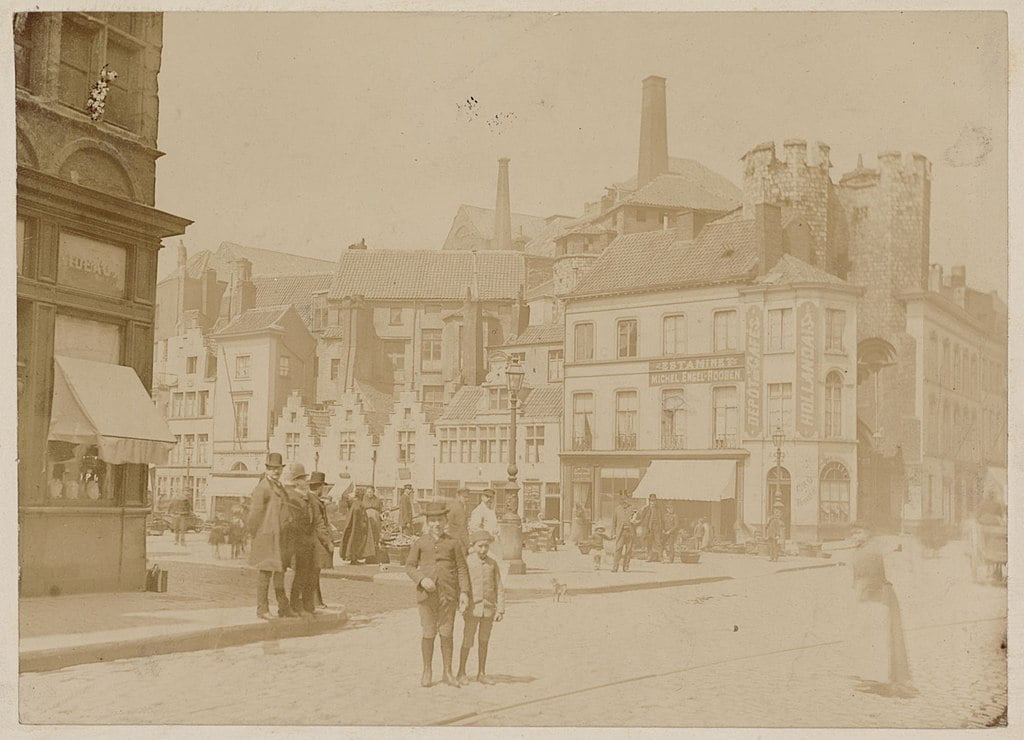
Two years later, after the king had accepted their marriage, he bestowed on Baldwin the title of marquess and sent him to Flanders to fortify and defend against the Vikings. Baldwin erected a wooden defense structure on the current castle’s site.
The Vikings took it over in 879 CE (AD) and used it as an administrative center. After the Vikings were driven from the area, Baldwin’s grandson, now as the Count of Alsace, Arnulf I (also known as Count Arnulf the Great) built a sturdier wooden fortification, surrounded by other wooden structures.
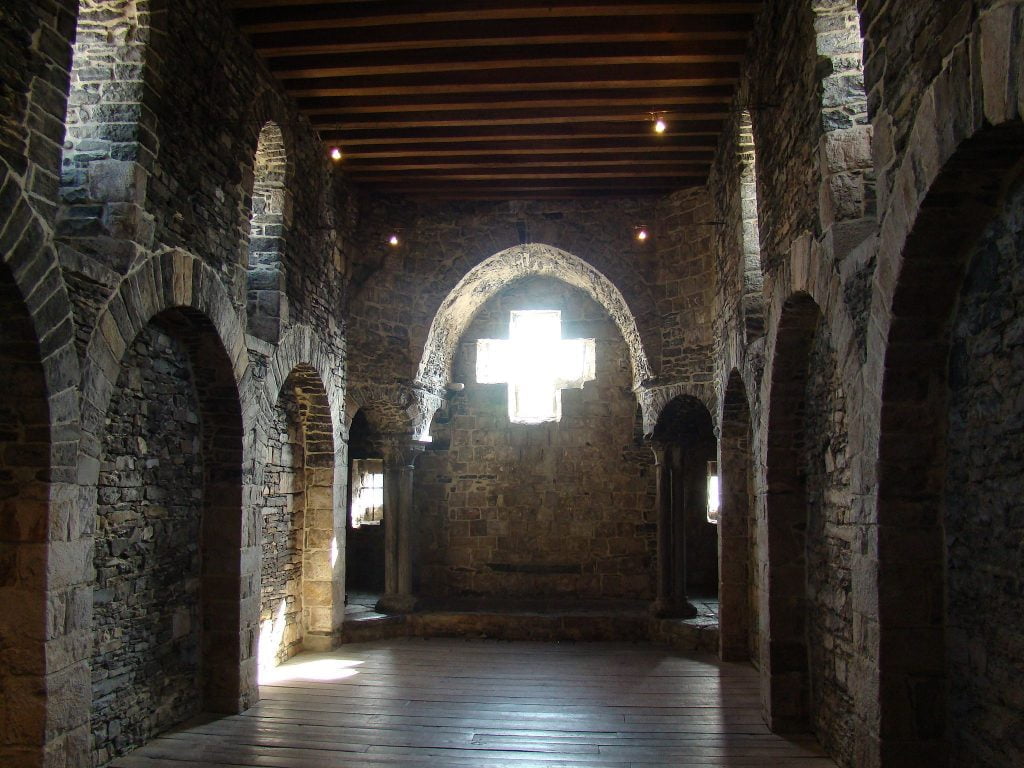
From Wood to Stone
Several counts rebuilt and increased the fortifications during the eleventh and twelfth centuries CE (AD). They replaced some wooden structures with stone buildings, a stone gateway, keep and tower, and added a moat.
The original version of today’s Gravensteen Castle, with its hint of the styling associated with Crusaders’ castles, was built by the arrogant count Philip I of Flanders in 1180 CE (AD). He wanted to ensure that his friends and enemies were aware of his power and glorious achievements. Philip I heightened the stone keep’s walls to over 98 ft and added the gate towers and a defense wall with twenty-four turrets.
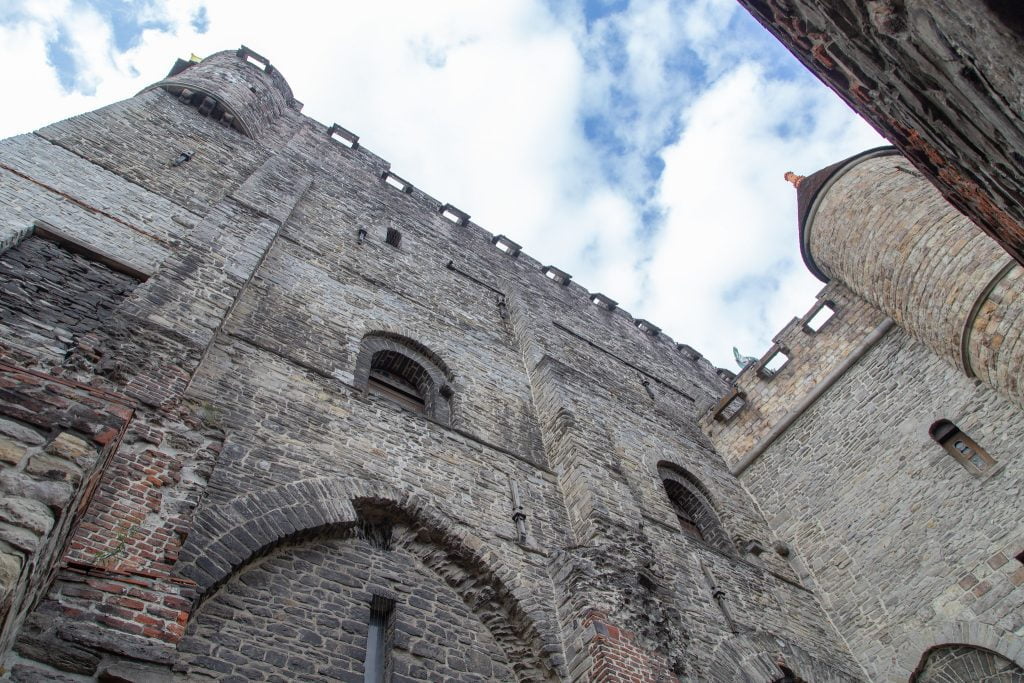
From Castle to Jail
After Count Louis I moved to a more comfortable residence, Gravensteen remained the administrative center of the province. The Ghent Mint of Flanders and private buildings were built on and around this medieval site.
Eventually, the castle became the hub of justice in Flanders. It served as a justice center, or rather a center for injustice, where confessions were extracted under torture.
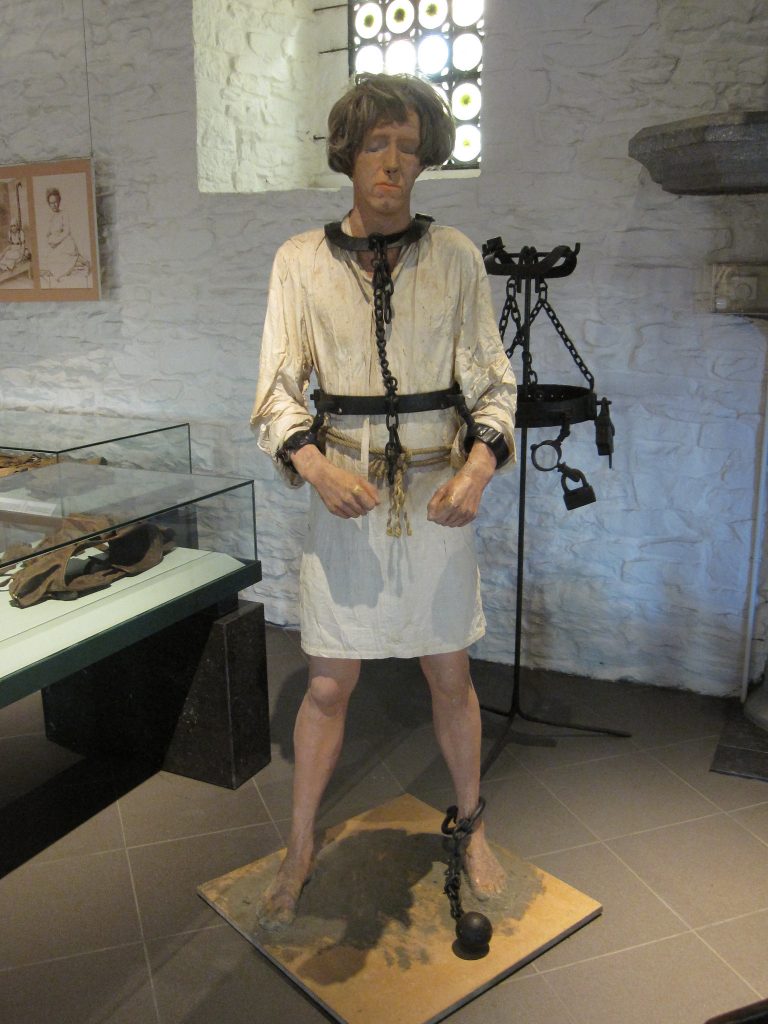
Revisit More Historic Places Below or Read Further
Current Times
An industrialist purchased the buildings during the Industrial Revolution and operated a cotton mill where the workers were housed on-site.
During the latter part of the 19th century, the city of Ghent purchased buildings that were originally parts of Castle Gravensteen. They contracted the French architect Joseph de Waele to restore the castle to its majestic glory days of the 12th century and the rule of Philip I.
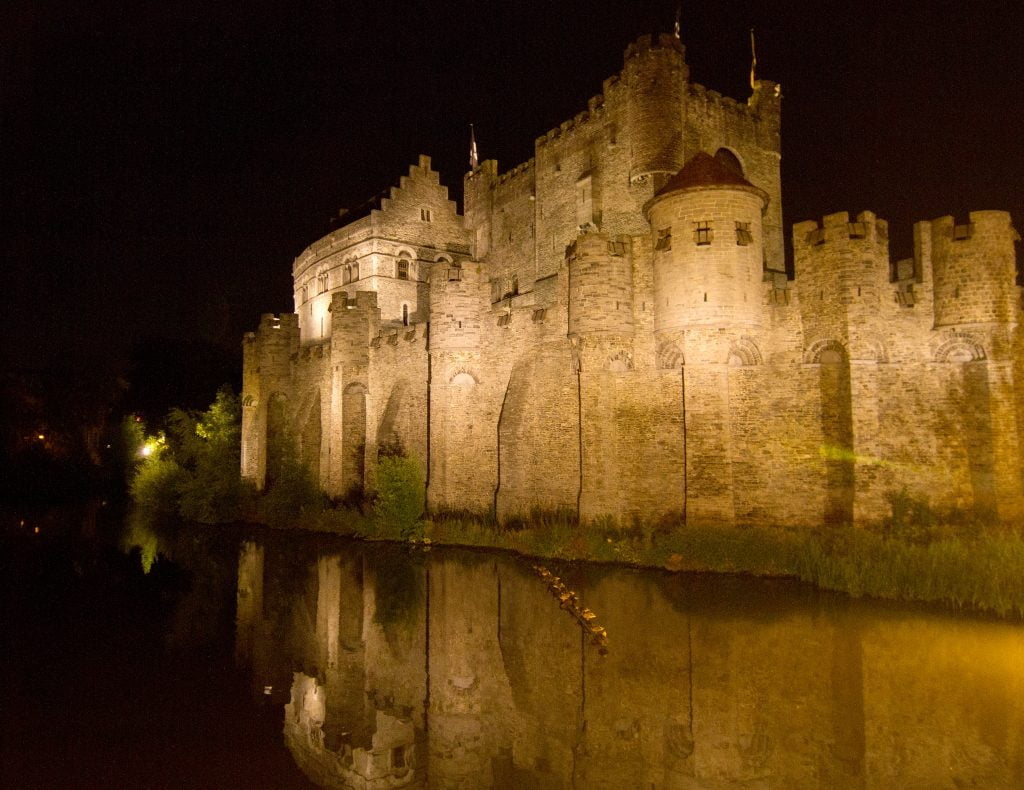
Gravensteen Castle was the focal point of the Ghent World Fair in 1913, for which they remodeled the city, including the building of houses on the Graslei.
Interesting Gravensteen Castle Facts
- The current castle represents the ideas of what the architects and planners imagined the original castle of Phillip I looked like, rather than the actual original castle.
- Torture tools were removed from the exhibits due to the potential influence they could have on impressionable children – possibly harming each other.
- The torture chamber is no longer open to the public for the same reason.
- The Castle of Counts has a unique audio tour and vision guide through which Ghent comedian, Wouter De Prez, explores the castle with you. This journey through time is packed with funny anecdotes and knights battling in the background!
- This magnificent location is of Roman origin … and we know the Romans were excellent road builders and conquerors of foreign lands, the Ghent area included.
- Castle Gravensteen is one of few castles in Belgium that stands in the central part of a city.
- For defense and protection against the Viking invasions, the Motte and Bailey (Moat and Tower) system of defense was built.
Visiting Gravensteen Castle – Tips and Tricks
If you are planning a trip to the Benelux countries, make sure that you include the picture-perfect, pristinely kept Gravensteen Castle in the city of Ghent, Belgium. You will be walking on nearly two thousand years of history. Appreciate the atmosphere, style, and history as you negotiate the narrow stairways, view the artifacts in the museum, and fill the unfurnished rooms with your own imagination while listening to the excellent multi-lingual audio guide.
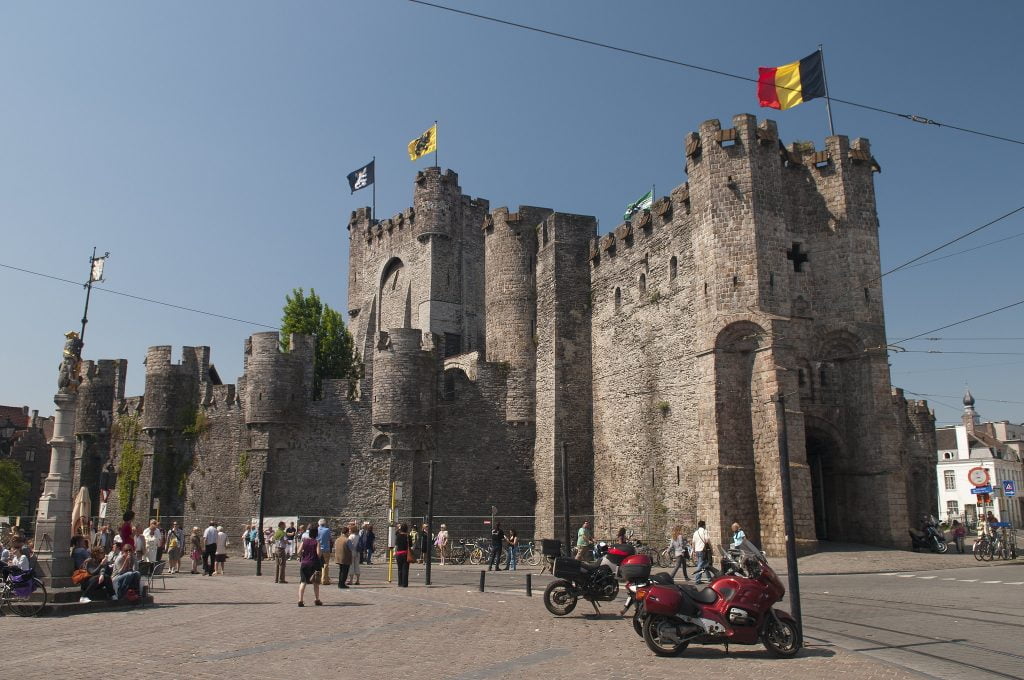
How to get to Gravensteen Castle?
Catch the train from Brussels to Gravensteen. This scenic trip takes only 37 minutes. Board the train at Brussels Central Station (every 15 min.) for €8 ($9 USD). Get off at St Peter’s Station in Ghent. Here you can board a tram (every 15 min.) for €3 ($4 USD) for a fifteen-minute ride to the Gravensteen. The tram stop is a mere 50 m (164 ft) walk from the entrance of the castle.
A taxi trip from Brussels is of course more convenient. It takes around 44 minutes but it will cost you at least €80 ($93 USD), and you may miss a relaxing scenic experience. Renting a vehicle is an independent way of traveling for a leisurely experience and stops along the way to enjoy the beautiful smaller towns. The rental cost and fuel price varies, and remember to budget for tolls along the 57 km (36 miles) drive.
Ticket Prices, Visiting Hours & Travel Tips
Information was checked & updated on October 29, 2023.
The entrance fee to Gravensteen Castle for adults is €13 ($14 USD). Teachers and adults in a group of 15+ are discounted to €11 ($12 USD), while college students (ages 19-25) and Ghentian adults (locals) are charged €7 ($8 USD). Teens (13-18) and Ghentian students can visit for only €2 ($2 USD). Children (0-12), Ghentian teens, group supervisors, and assistants to the disabled enter free of charge. Press and certain special arrangements through associations or hotels may also afford free entry.
All entrance fees include either an audio or vision guide, depending on which ticket you reserve. Tickets are the same price for the categories listed above. Alternatively, it is possible to arrange a group tour with guides – one guide for every 20 people. The cost is €93 ($107 USD) per guide plus individual admission tickets. It is prudent to book your tickets online via one of the many trustworthy sites, such as directly with the Gravensteen Castle or the City of Ghent. Guided tours must be pre-booked online.

The castle is open every day, 10 am to 6 pm, with the last entry at 4:40 pm–except on the 24th, 25th, and 31st of December, as well as on January 1st when it is closed entirely. The castle also hosts functions at times, such as weddings and special shows, which may cause some areas to be inaccessible. It is therefore advised that visitors should always check to avoid disappointment, especially during Covid with limited access tickets and limited numbers of visitors.
Accessibility
Castle Gravensteen does not have wheelchair access and is not recommended for people with back problems or walking difficulties, due to over 400 stair steps to get around inside the castle. There is a special planner available for people with autism from the Ghent website at https://historischehuizen.stad.gent/nl/gravensteen/toegankelijkheid.
How Long Will It Take to Tour Around?
This magnificent site is full of historical information, and it depends on your own zest and zeal. The average length for a visit is around one hour, but you might linger longer in certain areas of interest like the lookout tower, or enjoy a respite in the picnic area.
Up to Date Information
For up to date ticket prices and visiting hours visit the official website: https://historischehuizen.stad.gent/nl/gravensteen/
Some words of advice and tips:
- Check the daily weather forecast and dress appropriately.
- When traveling, always take a bag holding sunscreen and a bottle of water.
- Wear comfortable shoes with a grip.
- At this time of Covid, please take hand sanitizer and remember your mask.

